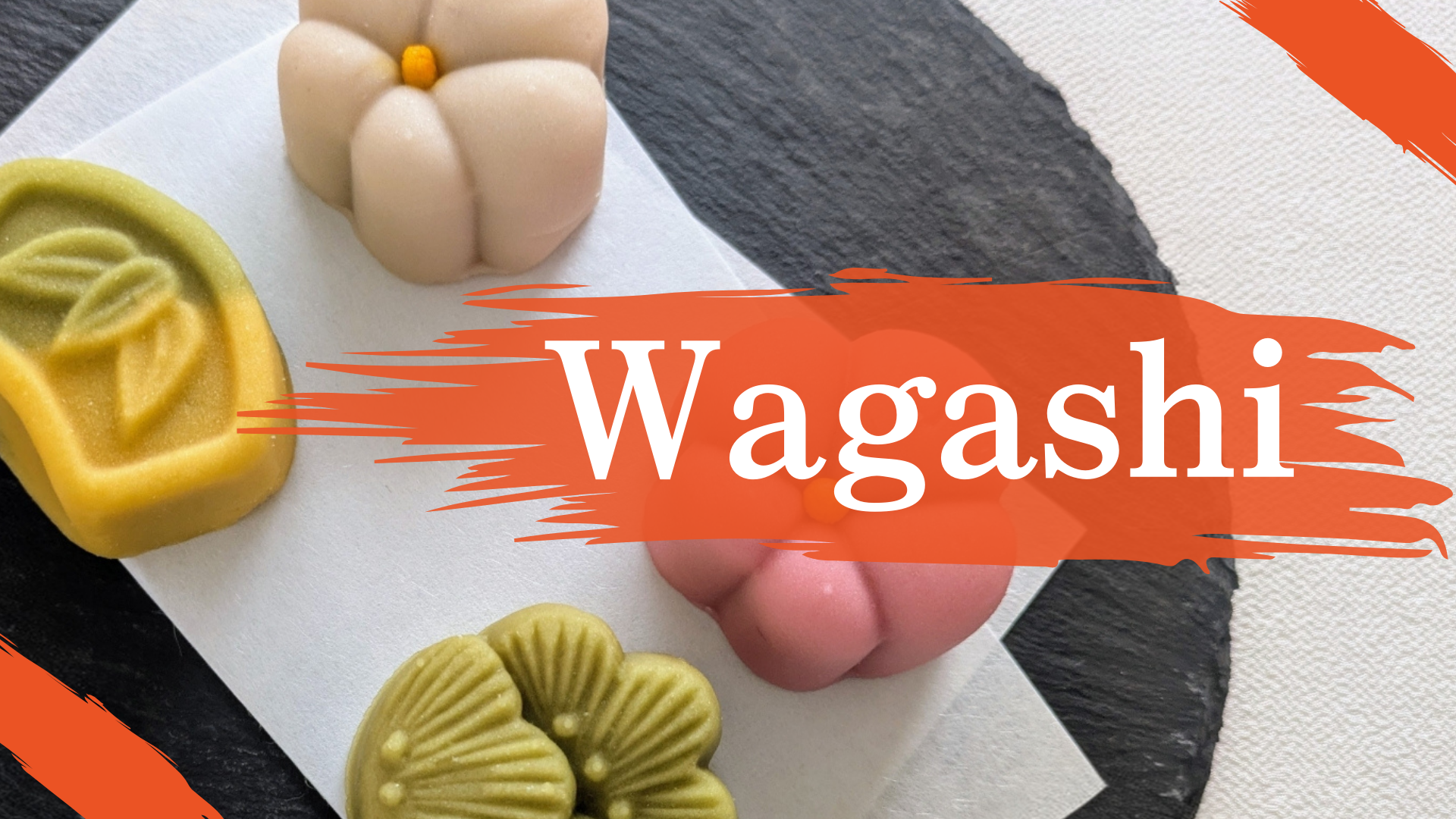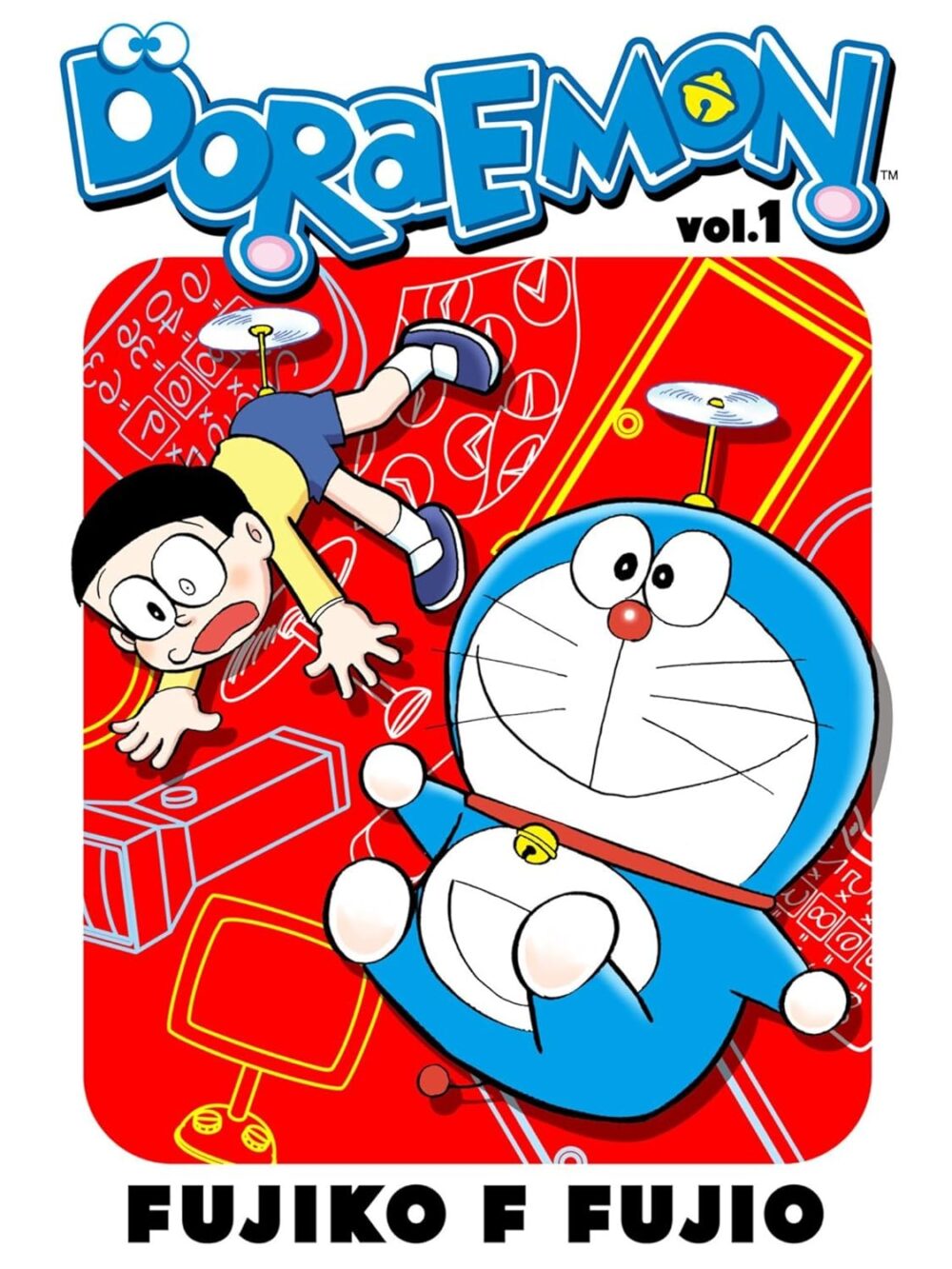When visiting Japan, you may come across beautifully crafted, colorful sweets called wagashi. These traditional Japanese sweets have been enjoyed for centuries and are often made from natural ingredients like rice, beans, and sugar. Let’s explore the world of wagashi and learn how to describe them in English!
What is Wagashi?
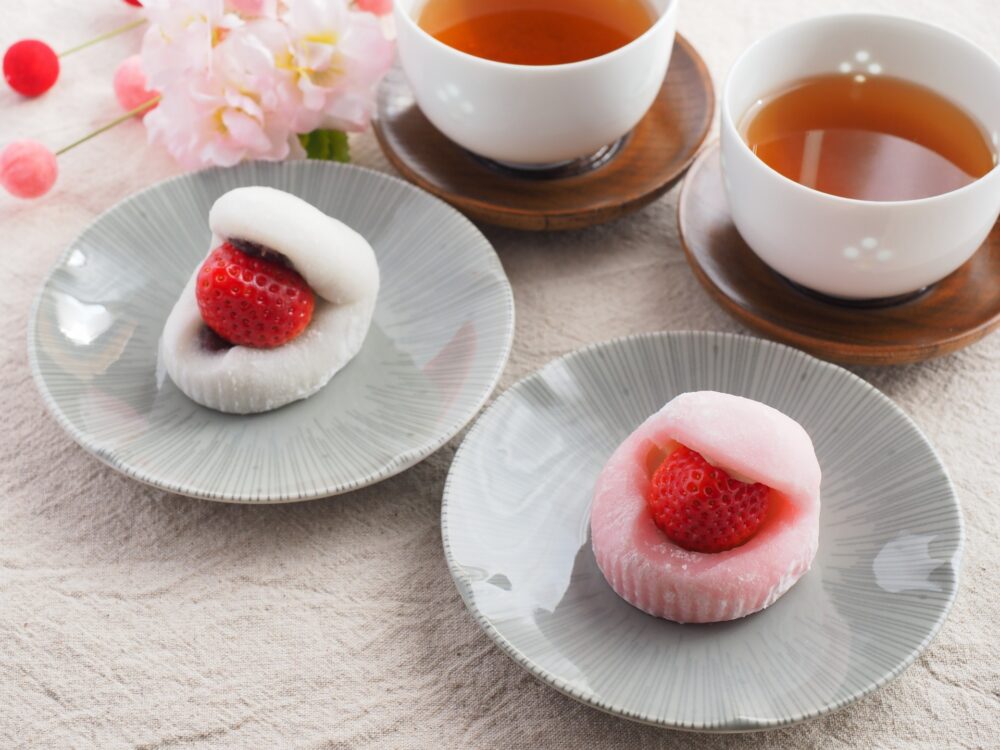
Wagashi refers to traditional Japanese sweets, often served with tea. Unlike Western desserts, wagashi typically use less sugar and highlight the natural flavors of ingredients like red bean paste, mochi (glutinous rice), and agar (a plant-based gelatin).
They are not only delicious but also beautifully designed, often reflecting the seasons and nature.
How to Say “Wagashi” in English?
There is no direct translation for wagashi in English. The best way to describe it is “traditional Japanese sweets” or “Japanese confectionery”.
Different Types of Wagashi
1. Manju
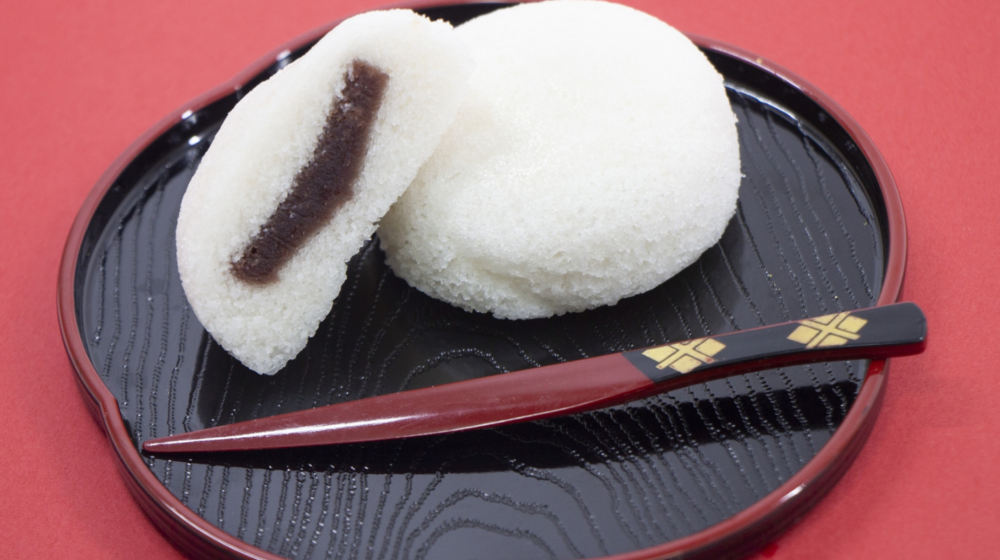
Manju are small, round steamed cakes filled with sweet red bean paste. The outer layer is soft and made from flour, rice powder, or buckwheat.
Some variations include chestnut or green tea flavors.
2. Dorayaki
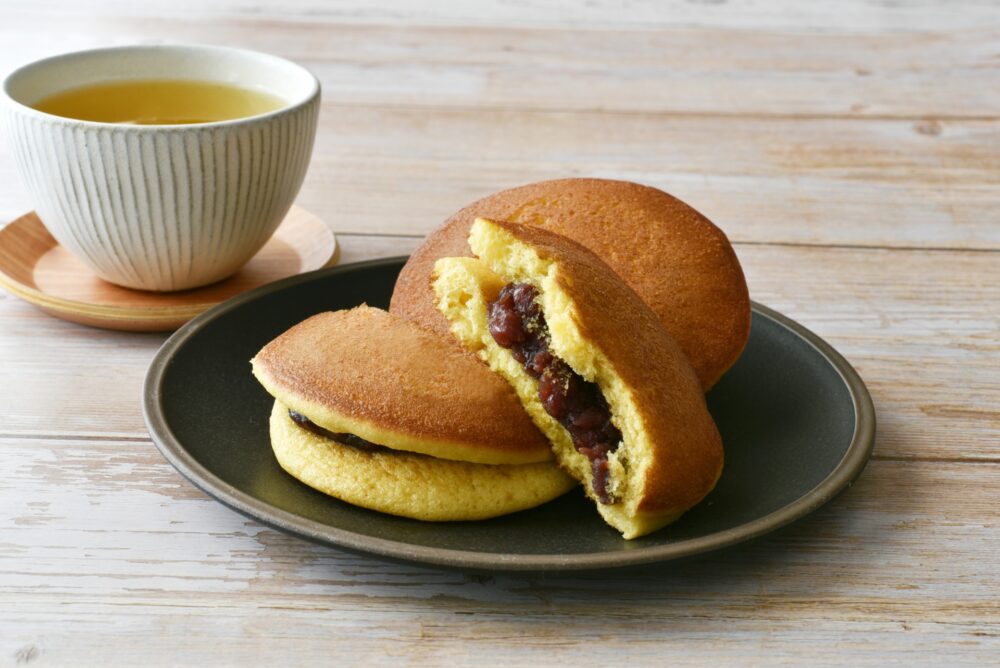
Dorayaki consists of two fluffy, pancake-like cakes filled with sweet red bean paste. It’s soft, slightly sweet, and a popular snack in Japan.
It is also known as the favorite treat of Doraemon, a famous Japanese cartoon character.
3. Dango
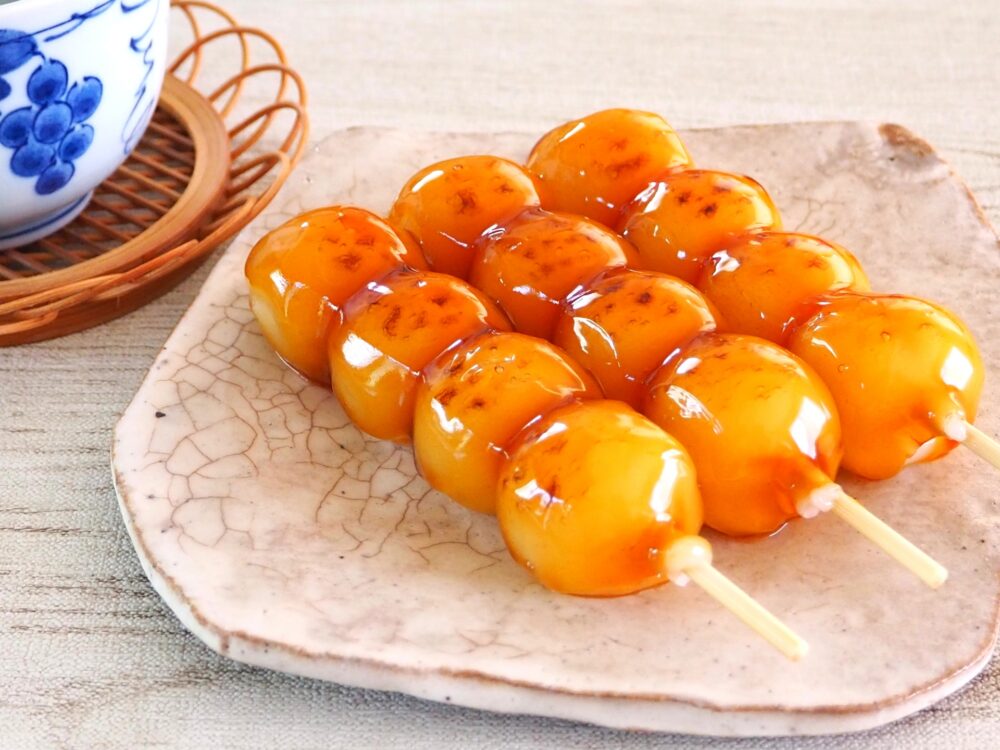
Dango consists of sweet rice dumplings on a skewer.
You can find different varieties, including:
- Mitarashi Dango – coated with a sweet soy sauce glaze.
- Anko Dango – covered in sweet red bean paste.
- Hanami Dango – pink, white, and green dango, often enjoyed during cherry blossom season.
4. Taiyaki
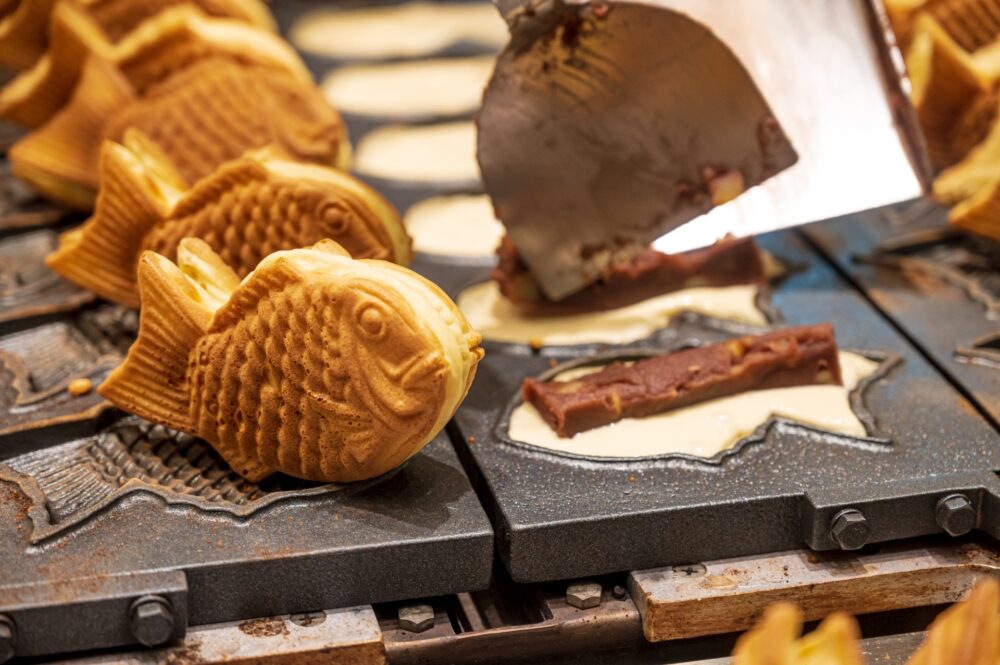
Taiyaki is a fish-shaped pastry that contains red bean paste, custard, or chocolate.
It has a crispy outside and a warm, soft filling inside. Despite its shape, it doesn’t contain any fish!
5. Yokan
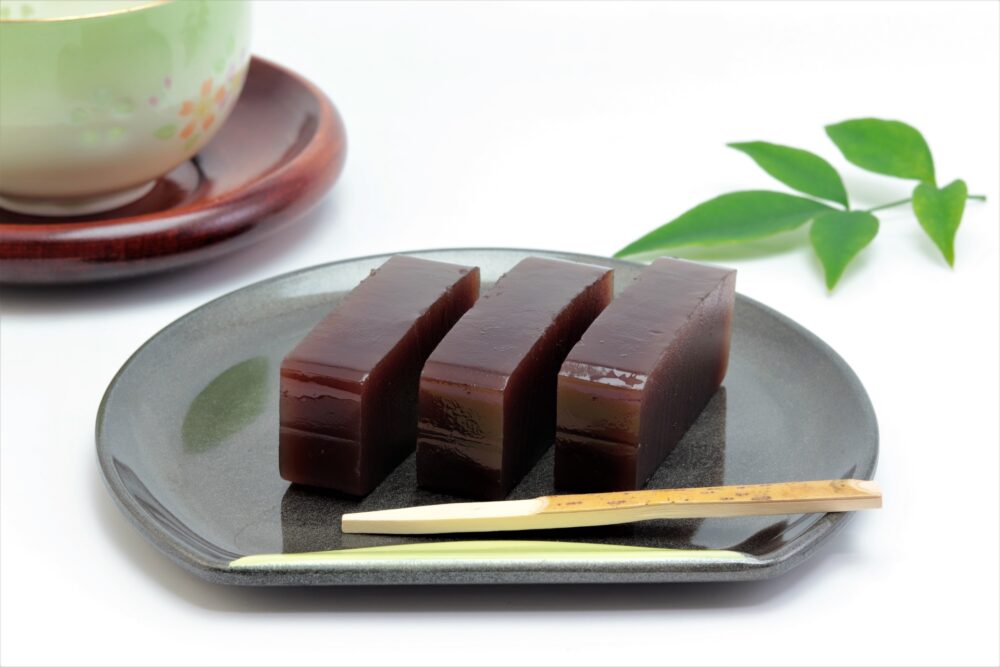
Yokan is a firm, jelly-like sweet made from red bean paste, agar, and sugar. It has a smooth texture and a rich, sweet flavor. Yokan is usually sold in blocks and sliced before eating.
It can be stored for a long time, making it a popular gift or travel snack.
6. Sakura Mochi
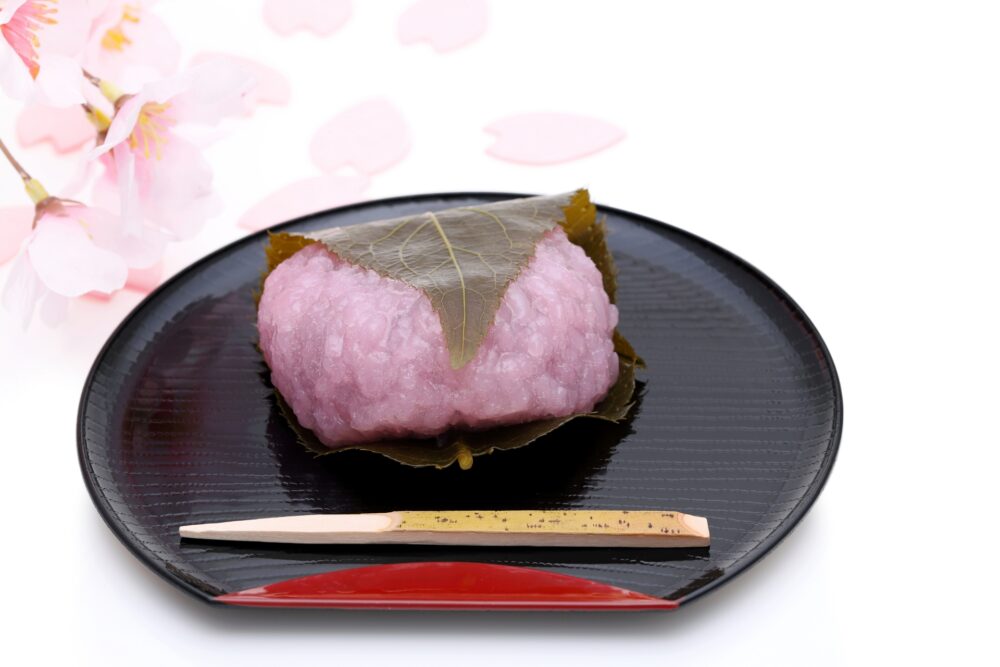
Sakura Mochi is a pink, sweet rice cake filled with red bean paste, wrapped in a pickled cherry blossom leaf. The leaf is edible and adds a slightly salty flavor that balances the sweetness.
Sakura Mochi is often sold during cherry blossom season (late March to early April). Eating it under the blooming sakura trees makes it taste even better!
Grab a bento box and a Sakura Mochi, find a nice spot under the cherry blossoms, and enjoy hanami (flower viewing). Give it a try!
Where to Try Wagashi in Japan?
- Traditional Tea Houses – Enjoy wagashi with matcha (green tea).
- Department Store Food Floors – Many stores sell high-quality wagashi.
- Local Sweet Shops – Find handmade wagashi in areas like Kyoto and Asakusa.
If you want to try Yomogi Mochi (mugwort rice cake), Nakatanidou in Nara is famous for it. The shop is known for its high-speed mochi pounding, a fascinating traditional technique.
After visiting Nara Park to see the deer, why not stop by for a fresh, chewy Yomogi Mochi?
Official website: https://nakatanidou.jp/
Why Try Wagashi?
- Unique Flavors – Different from Western sweets, wagashi are less sugary and focus on natural taste.
- Beautiful Designs – Many wagashi are shaped like flowers, leaves, or animals.
- A Cultural Experience – Wagashi are deeply connected to Japanese tea ceremonies and seasonal traditions.
FAQ
Yes, but it’s usually less sweet than Western desserts, focusing on natural ingredients.
No! Some feature white bean paste, chestnuts, sesame, or sweet potato instead.
Yes! Many wagashi use plant-based ingredients like rice, beans, and sugar, so vegetarians can enjoy them.
No, they may look similar, but they taste completely different! Anko comes from sweetened red beans and has a slightly earthy flavor, while chocolate comes from cocoa.
You can find many wagashi shops in Asakusa (Tokyo) near Sensoji Temple and in Kyoto, where traditional Japanese sweets are a local specialty.

